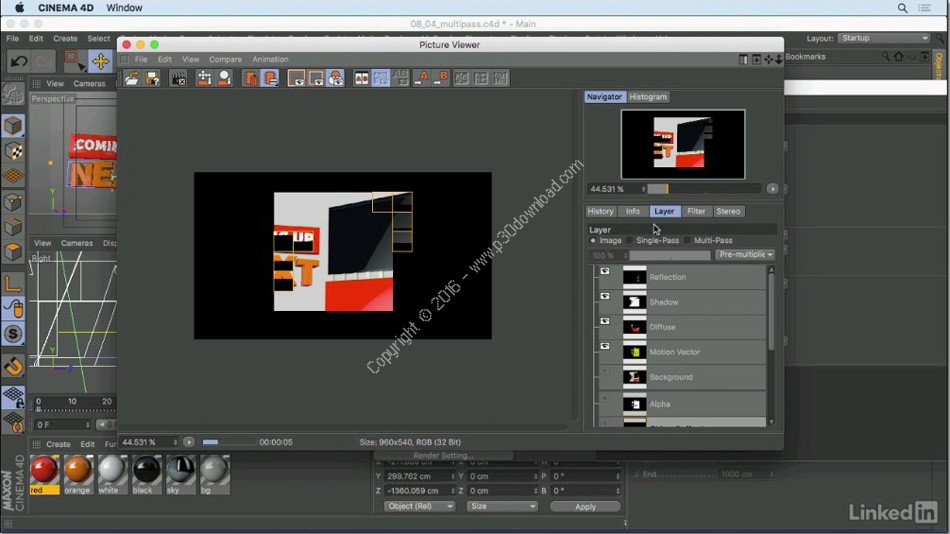

The new sound effector in R19 has been developed to create audio-reactive animations based on multiple frequencies from a single sound file. Updates to the MoGraph module expand on Cinema 4D’s tools for motion graphics by speeding up results and adding workflow capabilities in Voronoi fracturing that break objects progressively, add displaced noise details for more realism or glue multiple fracture pieces together more quickly for complex shape creation. Results are close enough to final render that client previews can be output using the new native MP4 video support. The viewport improvements add support for screen-space reflections and OpenGL depth-of-field, plus the screen-space ambient occlusion and tessellation functionality added in the previous release 18. In this release, MAXON has also re-engineered aspects of Cinema 4D’s core systems in order to modernise the software, including a new modelling core, deeply integrated GPU rendering for Windows and Mac, and OpenGL capabilities in BodyPaint 3D, MAXON’s paint and texturing application. MAXON is launching Cinema 4D R19 at SIGGRAPH 2017.

Release 19 is designed for individuals as well as larger studio environments – wherever artists are working across the content creation markets, especially in general design, motion graphics, VFX, VR/AR and all types of visualization.

MAXON Cinema 4D Release 19 brings developments to viewport performance, a new sound effector and functions for Voronoi fracturing in the MoGraph toolset, a new spherical camera, the integration of AMD’s ProRender and other updates. Cinema 4D R19 Updates 3D Workflows from Motion Design to VR


 0 kommentar(er)
0 kommentar(er)
